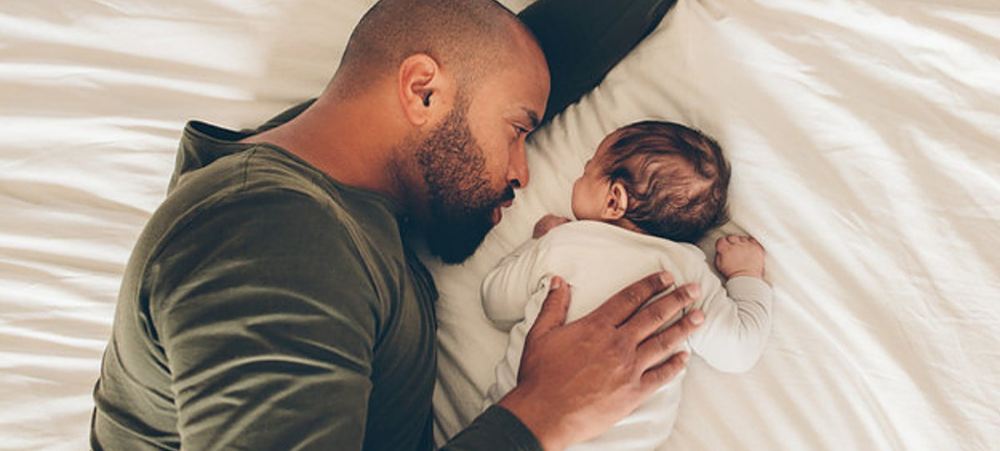According to Affinity Health, a leading provider of high-quality healthcare, nappy rash is a common type of irritated skin (dermatitis) that appears as inflamed patches on your baby’s bottom. Wet or infrequently changed nappies, skin sensitivity, and chafing are all common causes of nappy rash.1
“Around one in four babies and toddlers not yet toilet trained will experience nappy rash at any given time,” says Murray Hewlett, CEO of Affinity Health.
“While nappy rash can be frustrating for parents, it usually goes away with simple home remedies like air drying, more frequent nappy changes, and ointment.”
Symptoms Of Nappy Rash
Nappy rash signs and symptoms include:2
- Red or inflamed skin on your baby’s buttocks, thighs, and genitals
- Pink or red patches in the nappy area (the folds of the groin will usually look normal)
- Skin that feels hot to the touch
- Spots, pimples, or blisters around the nappy area
- Discomfort, fussiness, or crying, especially when changing nappies
- Peeling, flaking, or scaly skin
What Causes Nappy Rash?
Nappy rash is often caused by leaving wet or soiled nappies on for too long, but other factors can also cause nappy rash.
Rubbing or chafing
Nappy rash can be caused by tight-fitting nappies or clothing that rubs against the skin.
Using New Products
Your baby’s skin may react to a new brand of baby wipes or nappies, as well as the detergent, bleach, or fabric softener used to wash cloth nappies. Lotions, powders, and oils may contain ingredients that exacerbate the problem.
Bacteria Or Yeast Infection
What starts out as a simple nappy rash on your baby’s bottom can quickly spread to the surrounding skin. Because the area covered by a nappy is warm and moist, it is an ideal breeding ground for bacteria and yeast. These rashes can be found in the skin’s creases. You may also notice red dots strewn about the creases.
Food Allergies
The composition of a baby’s stool changes as your tot begins to eat solid foods. This increases the chances of nappy rash. Changes in your baby’s diet can also cause more stools, which can cause nappy rash. Breastfed babies may develop nappy rash due to something the mother ate.
Skin Issues
Babies with atopic dermatitis (eczema) or seborrheic dermatitis are more likely to develop nappy rash.
Antibiotics
Antibiotics can cause a rash by killing bacteria that control yeast growth. The use of antibiotics also increases the risk of diarrhoea. Breastfed babies whose mothers are taking antibiotics are also more likely to develop nappy rash.
How To Prevent Nappy Rash
Keeping the nappy area clean and dry is the best way to avoid nappy rash. Affinity Health recommends these 10 simple steps to help reduce the chances of nappy rash developing on your baby’s skin.
- Change your baby’s nappies frequently and request the same from staff if your child is at daycare.
- Choose disposable nappies over cloth nappies. Disposable nappies have absorbent gel, which is effective because they draw moisture away from the skin.
- Rinse your baby’s bottom with warm water as part of each nappy change. Cleaning the skin can be aided by moist washcloths, cotton balls, and baby wipes.
- Use alcohol-free or fragrance-free wipes on your baby’s skin. Alternatively, use a gentle non-soap cleanser, paediatrician and dermatologist-approved, hypoallergenic, ph-balanced, and free from colourants and perfumes.
- Allow your baby’s skin to air dry, or gently pat it dry with a clean towel. You should not scrub your baby’s bottom.
- Use powders sparingly. Cornstarch-based baby powders may be problematic because their main ingredient may make a candida-caused nappy rash worse.
- Apply cream and ointment that contains time-tested ingredients such as petroleum jelly and zinc oxide.
- After changing your baby’s nappy, thoroughly wash your hands. Hand washing can help keep bacteria and yeast from spreading to other parts of your baby’s body, you, or other children.
- Nappies should be fastened securely but not too tightly. Nappy rashes can be avoided by using a nappy that allows for some airflow. Nappies that are too tight can irritate the skin. Avoid using plastic or tight-fitting nappy covers.
- Allow your baby’s bottom to go longer without a nappy whenever possible. Air-drying skin is a natural and gentle way to dry it. Try laying your bare-bottomed baby on a large towel and engaging in some playtime to avoid messy accidents.
When Should You See A Doctor?
If your baby’s skin does not improve after a few days of home treatment, consult with your family doctor or baby’s paediatrician. To treat nappy rash, you may need prescription medication, or the rash could be caused by something else, such as a zinc deficiency.
targeted toward Parents.
We understand that there are many aspects that encompass a Mother, Father or Child and strive toward providing resources and services that accommodates
this.
Our content is aimed to inform and educate families on issues starting from
pregnancy through to the challenges of the teen-age years.
- Building a Reading Habit: Books That Kids Actually Love - October 17, 2025
- Dealing With Mom Guilt: Tips to Let Go - October 17, 2025
- Simple Daily Routines That Reduce Stress for Parents - October 16, 2025






1 thought on “NAPPY RASH: TREATMENT TIPS”
A crying baby is the most painful thing to experience especially when you don’t understand what’s wrong with the baby.